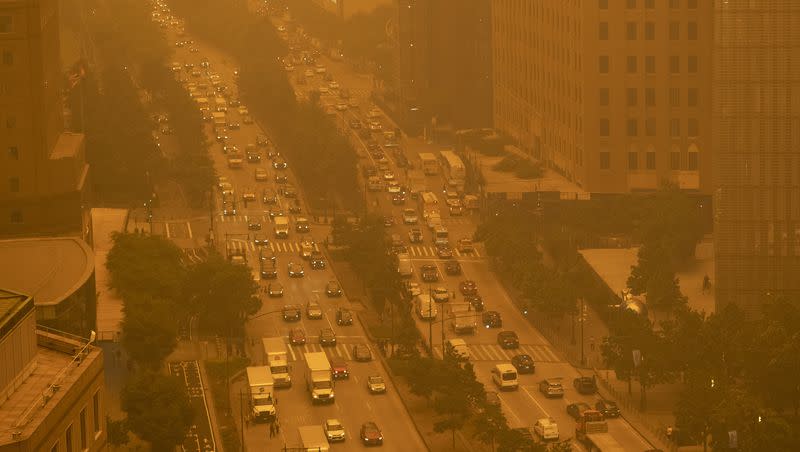Canadian wildfire smoke is expected to persist through the week, making its way westward

According to earlier Deseret News reporting, wildfires in Canada are resulting in hazy skies and poor air quality across large portions of the U.S. this week, from the Northeast and Mid-Atlantic, even spreading into the Midwest.
At least 100 million Americans are under air quality advisories, USA Today reported, and New York City had the worst air quality in the world on Tuesday, per Deseret News. Although the smoke is currently blanketing the eastern parts of the country, Americans may be wondering which states could be affected next, and how long the smoke will last.
Related
American cities put under air quality alerts amid Canadian wildfires
Research compares breathing Utah air for a day to smoking up to five cigarettes
Why is the smoke so bad? Historic Canadian wildfires are resulting in thick, hazy, smoke, resulting in the worst air quality much of the U.S. has seen in decades, in states far from the fires, ABC stated. Scientific American said that this is because the fires in Canada are being fueled by a high-pressure system in the atmosphere lingering over Canada, resulting in high temperatures and low precipitation. Just south of the fires is a low-pressure system lingering over the Northeast and mid-Atlantic regions of the U.S., which is pulling smoke away from the source of the fire and causing it to streamline into this area.
“That’s why northern New England, although closer to the fires, currently has much cleaner air than New York State and the mid-Atlantic coast,” Scientific American reported.
How long will the smoke last? According to CBS, the wildfire smoke is expected to last through Thursday, and may gradually ease up over the weekend. Forecasts predict the wind direction will change, causing the smoke to move away from the U.S. as a few storm clouds may move in.
However, the presence of the smoke is determined by wind patterns which can be inconsistent, Scientific American continued, meaning that small shifts in the wind can make for air quality that is inconsistent and difficult to accurately predict.
Where will the smoke travel? A developing storm is predicted to push the smoke westward “across the Great Lakes and deeper south through the Ohio Valley and into the mid-Atlantic region,” via Reuters.
CBS added that the smoke will likely be less severe in the U.S. due to storm systems traveling across the country over the weekend, but the smoke will be a continued issue for those living closer to the source of the wildfires.
Tips to stay safe in poor air quality: According to Deseret News, there are ways to stay safe when the AQI is poor.
Stay indoors if possible, keeping doors and windows shut.
Run air conditioners constantly, if possible, closing the fresh air intake. Installing an air filter can also help.
Use portable air filters and cleaners.
Avoid frying or cooking food that could cause smoke indoors.
Avoid intense outdoor activity, including exercise.

